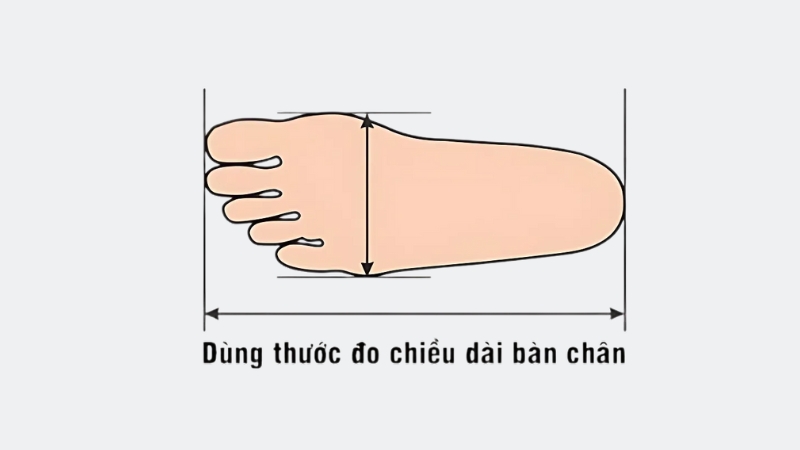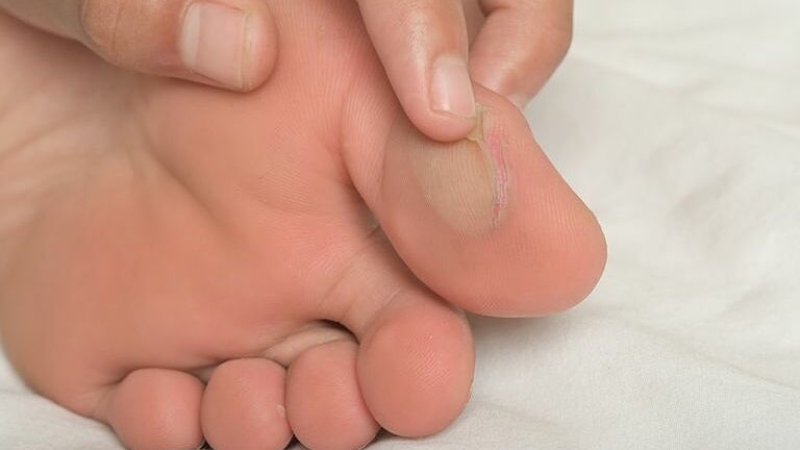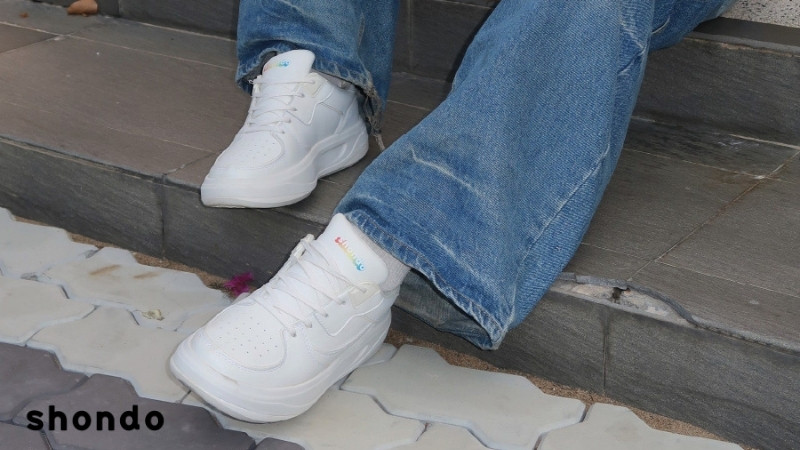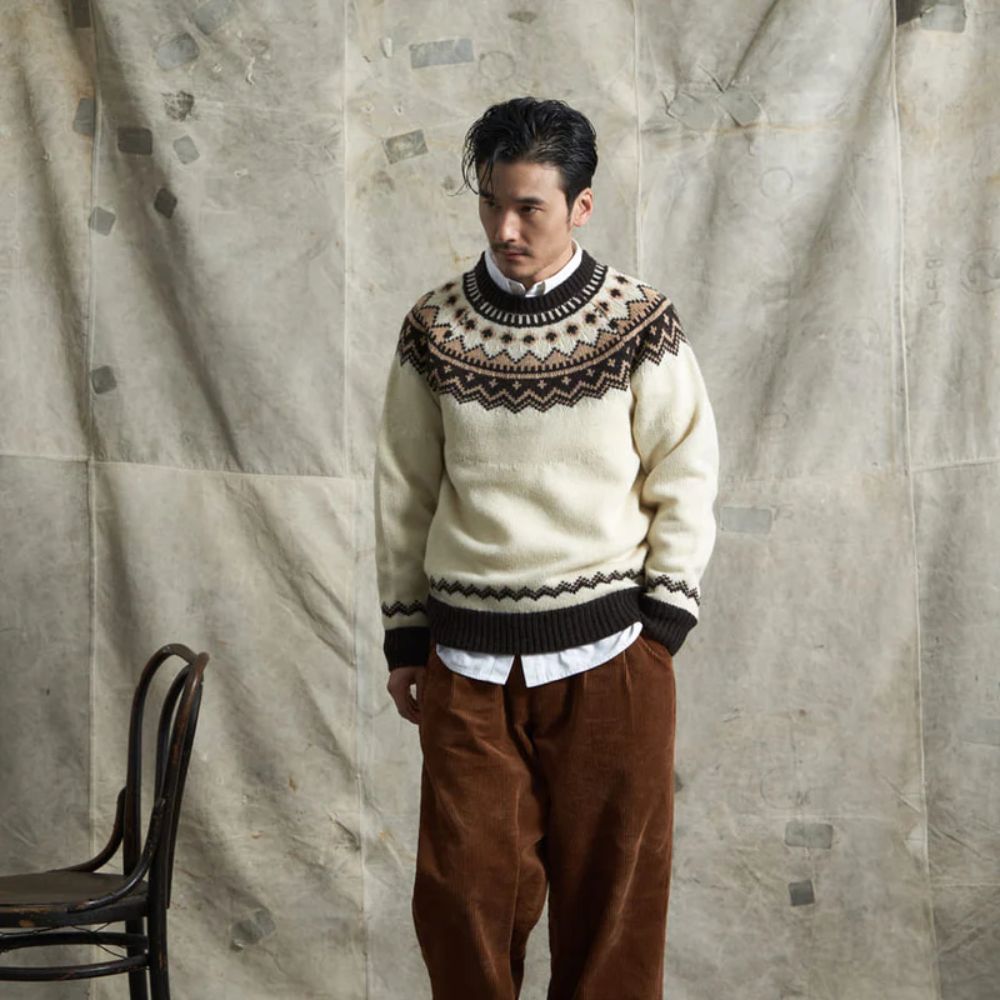Choosing the wrong shoe size not only makes you feel uncomfortable and hurts your feet, but also affects your health in the long term. So how many centimeters of extra shoes is appropriate? Let's find out the answer with Shondo through the article below!
1. Key Points
Useful information you will get when reading this article:
- Detailed instructions on how to accurately measure foot length, helping readers easily measure shoe size at home.
- Answering the question "How many centimeters of extra space should you have in your shoes to be suitable", giving expert advice on the ideal space between the tip of the shoe and the tip of the toe, and providing specific analysis for each different type of shoe.
- Point out the potential risks of wearing shoes that are too loose or too tight, helping readers clearly realize the importance of choosing the right shoe size.
- Share more tips to help readers choose the best-fitting shoes, such as referring to the size chart, paying attention to the material, trying on shoes directly,...
- Answering common questions related to choosing shoe size such as: Is it okay to wear shoes with 1cm extra? How to know if shoes fit? When should I measure shoe size?
2. How many centimeters extra should I wear in shoes?
2.1. How to measure foot length accurately:
To choose the correct shoe size, you first need to know how to measure your foot length accurately. You can refer to the following steps:
- Step 1: Prepare white paper larger than your foot, pencil, tape measure or ruler.
- Step 2: Place the paper on the floor, close to the wall and place your foot on the paper so that your heel touches the wall. Note, you should measure your foot size in the evening, when your foot is resting and fully expanded.
- Step 3: Use a pencil to mark the tip of the longest toe and the end of the heel on the paper.
- Step 4: Use a tape measure or ruler to measure the distance between the two marked points, which is the length of your foot.
Note: You should measure both feet as feet may vary in size.
[caption id="attachment_5696" align="aligncenter" width="800"] Measure foot length[/caption]
Measure foot length[/caption]
2.2. How many centimeters extra should I wear in shoes?
You should choose shoes with 0.5 - 1 cm more than the length of your foot. This space allows your toes to move freely, especially when exercising or hiking. However, the ideal space can vary slightly depending on the type of shoe:
- Sports shoes/ sneakers : You can choose shoes with an extra size from 0.5 - 1 cm, even 1.5 cm for running shoes to create maximum comfort when moving.
- High heels: Choose shoes that fit your feet better than other types of shoes, with an ideal gap of 0.5 - 0.7 cm.
- Sandals: Similar to sneakers, you should choose men's or women's sandals with the toe of the shoe extending about 0.5 - 1 cm to ensure comfort when moving. However, you should note to choose sandals with a back strap or a sturdy velcro strap to avoid slipping off your feet when moving.
 For sports shoes, you can choose shoes that are 0.5 - 1 cm too big[/caption]
For sports shoes, you can choose shoes that are 0.5 - 1 cm too big[/caption]
3. Risks of wearing the wrong size shoes?
3.1. Harmful effects of wearing shoes that are too loose
Wearing shoes that are too big can make your feet slip easily, causing loss of balance, tripping, or even spraining or dislocating joints, especially during strenuous exercise. In addition, wearing shoes that are too big often can also reduce foot stability, causing pain, tired feet, and creating an unsightly feeling.
3.2. Harmful effects of wearing shoes that are too tight
Wearing shoes that are too tight will cause your feet to be squeezed, your toes to be squeezed, causing pain, numbness, and even toe deformities. Wearing tight shoes also prevents your feet from sweating, creating a favorable environment for bacteria to grow, causing foot odor and skin diseases such as nail fungus and interdigital dermatitis.
[caption id="attachment_5698" align="aligncenter" width="800"] Calluses usually appear on the heels and undersides of the toes[/caption]
Calluses usually appear on the heels and undersides of the toes[/caption]
4. Tips for choosing the most accurate shoe size
In addition to knowing your foot size and the rules for choosing shoes with extra inches, you can refer to a few tips below to choose the most suitable pair of shoes:
- Refer to the size chart of each brand: Each shoe brand usually has its own size conversion chart. Therefore, you should carefully refer to the brand's size chart before buying, especially when buying online.
- Pay attention to shoe material: Genuine leather can often stretch after a period of use. Therefore, you should choose a size that fits your feet or is slightly tighter than shoes made from other materials.
- Try the shoes on in person (if possible): The best way to know if the shoes really fit is to try them on in person. Try the shoes on both feet and walk around the store to get a feel for how comfortable they are.
- Choose size according to larger foot: If your two feet are different sizes, choose the shoe size chart based on the larger foot size.
- Choose size according to purpose of use: Depending on the purpose of use, you can flexibly choose the appropriate shoe size. For example, you should choose slightly larger sports shoes when playing sports that require a lot of movement to create comfort and limit injuries.
 Pay attention to shoe material[/caption]
Pay attention to shoe material[/caption]
5. Should I buy shoes 1 size larger?
Buying a shoe size larger may be appropriate in some situations. Here are some reasons and situations to consider when choosing a shoe size larger:
When to buy shoes 1 size bigger:
- Athletic or running shoes: If you are buying shoes for running or working out, it may be a good idea to go one size up. Your feet expand when you run, and a wider shoe will help keep your feet comfortable and prevent blisters.
- Wear thick socks: If you regularly wear thick socks or winter shoes, choosing shoes that are 1 size larger will give you more room for your socks and make them more comfortable.
- Feet that swell at the end of the day : For people whose feet tend to swell at the end of the day due to standing or moving around a lot, going one size larger in shoes can provide more comfort throughout the day.
When not to choose shoes 1 size larger:
- Feet have their own characteristics: If you have wide feet or a high instep, choosing a shoe size larger can help avoid tightness and create more room.
- Dress shoes or high heels: With dress shoes, high heels or other types of shoes that require a precise fit to ensure aesthetics, choosing shoes that are too loose can upset your balance, making it difficult and uncomfortable to move.
- Everyday shoes: For everyday shoes, shoes that are too loose can cause your feet to slip easily, causing discomfort and irritation when walking a lot.
- Risk of injury: If the shoe is too loose, your foot will not be stable when wearing it, leading to the risk of injury such as slipping or aching joints.
In short, whether or not to wear shoes that are 1 size larger depends on each person's needs and preferences. However, you should carefully consider the benefits and harms to make the right decision, avoiding affecting your health and experience when using.
[caption id="attachment_5700" align="aligncenter" width="800"] If you often wear thick socks, you may want to consider going up a size[/caption]
If you often wear thick socks, you may want to consider going up a size[/caption]
6. Related questions
6.1. Is it okay to wear shoes that are 1cm too big?
As mentioned in the previous section, you should choose shoes with a length that is 0.5 - 1cm longer than the length of your foot. Therefore, wearing shoes that are 1cm longer is completely acceptable, especially with sports shoes and flat shoes. However, with other types of shoes, you should consider choosing a size that fits or is not too loose to ensure stability and comfort when moving.
6.2. How do I know if the shoes fit?
To know if the shoes really fit your feet, you can rely on the following signs:
- Comfortable feeling: When wearing shoes, you will feel comfortable, soft, without being squeezed or rubbed on any position on your feet.
- Free-moving toes: You can easily move your toes, without being constrained or pressed.
- Moderate space at the tip of the shoe: There should be a small space of 0.5 - 1cm between the tip of the longest toe and the tip of the shoe to create comfort when moving.
- Heel does not slip off: When moving, the heel does not slip off the shoe, proving that the shoe is the right size.
6.3. When is the best time to measure shoe size?
The best time to measure your shoe size is in the evening, after a long day of activity. At this time, your feet are at rest and fully expanded, giving the most accurate measurement results.
[caption id="attachment_5701" align="aligncenter" width="800"] Wearing shoes without feeling uncomfortable is a sign that the shoes fit your feet[/caption]
Wearing shoes without feeling uncomfortable is a sign that the shoes fit your feet[/caption]
Choosing the right size of shoes will affect your health and comfort when using. Hopefully, the information in the article has helped you answer the question of how many centimeters of extra shoes you should wear and pocket many useful tips to choose the most suitable pair of shoes.
Related Articles

Nếu bạn đã và đang sở hữu cho mình đôi giày ballet sneaker nhưng vẫn chưa biết outfit nào phù hợp. Xem ngay bài viết này với 5 cách phối đồ với giày ballet sneaker đẹp không có điểm trừ cùng Shondo...

Squid Game 3 chính thức khuấy đảo trên màn ảnh, bạn đã sẵn sàng ngồi liền 6 tập để xem cuộc chiến sinh tồn lần cuối của Gi-Hun chưa? Dưới đây là combo cuối tuần “chuẩn sinh tồn hiện đại” mà Shondo ...

Phong cách Retro là gì mà được nhiều người săn đón như vậy? Cùng Shondo tìm hiểu qua bài viết sau đây để biết thêm nhiều điều thú vị từ điểm đặc trưng cho đến cách phối đồ như thế nào là chuẩn nhé....

Một trong những trào lưu nổi bật gây sốt trên các cộng đồng yêu thời trang chính là phong cách Maillard. Nhưng điều gì khiến chúng lại có sức hút lớn đến như vậy? Shondo sẽ giúp bạn hiểu rõ hơn về...

Áo Polo nữ - item nghe thì tưởng già nhưng thực ra lại đang quay trở lại mạnh mẽ. Từ sân golf đến sân trường, từ văn phòng đến quán cafe, chiếc áo đơn giản với cổ bẻ đặc trưng này bỗng trở nên đa n...

Phối đồ Vintage trong giới thời trang mang đến những nét độc đáo rất riêng. Phong cách này trở thành xu hướng phổ biến không chỉ ở nữ mà còn xuất hiện nhiều ở nam giới. Shondo sẽ cho bạn thấy điều ...

